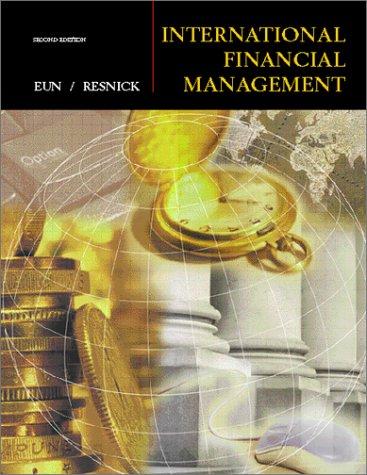Answered step by step
Verified Expert Solution
Question
1 Approved Answer
Upon successfully bidding for the project ( and obtaining the conditions specified in Part A ) , your client approaches you with an alternative arrangement.
Upon successfully bidding for the project and obtaining the conditions specified in Part A your client approaches you with an alternative arrangement. Instead of a lumpsum turnkey contract, they are willing to convert the project to a regular Engineering and Construction contract, where you bill the client for your cost no profit To align incentives, the client proposes that to ensure your profitability, they give you a stake in the company that controls the project called ManCo a company that basically oversees construction, manages the facility afterwards and distributes the profits from the project to its owners. You will be awarded this stake during year at the end of the project ManCo's CFO sees the current value as of today of the company at $ million, so your stake of that as of today would be worth $ million. Your auditors have checked this estimate and consider it a fair value. But your auditors also warn you that there is considerable risk in this value over the next years at the end of the project, ManCo may be worth as little at $ million or as much as $ billion dollars. Cost variations are a key reason for this risk. They expect that the probability distribution of the value of your stake in ManCo in year is a uniform one ie equal probabilities for each of the possible values from $ million, $ million, $ million, to $ million. After some negotiations, your CEO is able to obtain a guarantee from ManCo that you can convert this stake into a $ million lumpsum payout, also paid at the end of the project. For simplicity, assume that you would find out very quickly after signing the contract ie within the first year what the final value of your stake is so you could immediately switch to the $M fixed amount option if desired. Using this information, include the cash flow, ePV calculation, Expected Value EV and Correct NPV
Upon successfully bidding for the project and obtaining the conditions specified in Part A your client approaches you with an alternative arrangement. Instead of a lumpsum turnkey contract, they are willing to convert the project to a regular Engineering and Construction contract, where you bill the client for your cost no profit
To align incentives, the client proposes that to ensure your profitability, they give you a stake in the company that controls the project called ManCo a company that basically oversees construction, manages the facility afterwards and distributes the profits from the project to its owners. You will be awarded this stake during year at the end of the project ManCo's CFO sees the current value as of today of the company at $ million, so your stake of that as of today would be worth $ million. Your auditors have checked this estimate and consider it a fair value. But your auditors also warn you that there is considerable risk in this value over the next years at the end of the project, ManCo may be worth as little at $ million or as much as $ billion dollars. Cost variations are a key reason for this risk. They expect that the probability distribution of the value of your stake in ManCo in year is a uniform one ie equal probabilities for each of the possible values from $ million, $ million, $ million, to $ million.
After some negotiations, your CEO is able to obtain a guarantee from ManCo that you can convert this stake into a $ million lumpsum payout, also paid at the end of the project. For simplicity, assume that you would find out very quickly after signing the contract ie within the first year what the final value of your stake is so you could immediately switch to the $M fixed amount option if desired.
Using this information, include the cash flow, ePV calculation, Expected Value EV and Correct NPV
Step by Step Solution
There are 3 Steps involved in it
Step: 1
To approach this problem we need to calculate and analyze the different scenarios and their respective values Lets break down the steps involved Step 1 Understanding the Problem You have two options r...
Get Instant Access to Expert-Tailored Solutions
See step-by-step solutions with expert insights and AI powered tools for academic success
Step: 2

Step: 3

Ace Your Homework with AI
Get the answers you need in no time with our AI-driven, step-by-step assistance
Get Started


